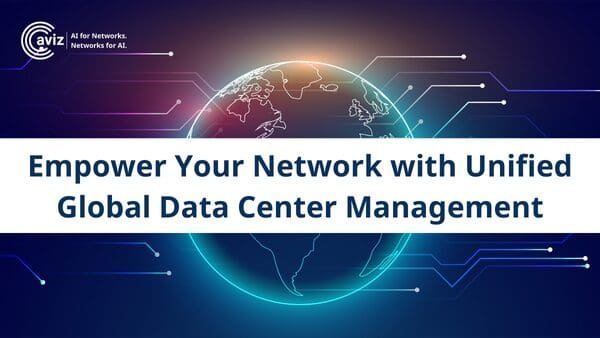Optical communication networks are, literally, the backbones of the information superhighway. They have been providing the conduits over which broadband data is delivered worldwide, at the actual speed of light. Hundreds of millions of miles of deployed optical fiber interconnect continents, nations, cities, neighborhoods, and private homes. Behind this backbone comes a suite of complementary optical subsystem components that are pivotal to the operation and management of these networks. These optical microsystems directly interact with the optical signal and – through functionality afforded by design – are able to filter, switch, attenuate, and adapt the optical communication channels carried by the network.
One of the major optical microsystem applications is the optical transceiver. In simple words, an optical transceiver is a device that converts data to light and vice versa to be transmitted and received across optical fibers. Imagine these devices to be traffic merge points in an interstate highway system that takes in off-highway city traffic and links them into super-speed highway traffic. Just as the proper functioning of traffic merges is necessary for the seamless functioning of a highway system, continuous observability of thousands of these devices at scale becomes a must-have for network administrators.
In this blog, we will demystify optical transceiver-based link optics from an engineering perspective. Besides that, we will also highlight the ways Aviz ONES is leveraged by network teams to continuously observe, investigate and triage in real-time, thereby alleviating their time, cost, and resource burdens.
Optical Transceiver – Engineer’s Definition
An Optical transceiver is used to convert electrical signals to optical light signals and optical signals to electrical signals. It is a hot-swappable device that can be plugged into a networking device that can send and receive data. Optical transceivers come in different forms and dimensions called Form Factors which support different speeds and distances. Data center networks can be copper-based connections, fiber-based connections, or a combination of copper and fiber cables called hybrid connections, and transceivers can receive and transmit data in both copper and fiber optic cables.
Why Fiber over Copper
| Fiber | Copper |
|---|---|
| Made up of glass fiber | Made up of copper wire |
| Carries data in the form of light | Carries data in the form of electric signals |
| Offers higher bandwidth | Offers lower bandwidth |
| Transmission speed is faster | Transmission speed is slower |
| Low latency | High latency |
| Installation cost is high | Installation cost is less |
| Attenuation is very low | Attenuation is high |
| Fiber is thin and light, easily breakable | Copper is heavier and thick, difficult to break |
| More resistant to corrosive materials | Prone to corrosive materials |
| More reliable, and durable | Less reliable, and durable |
| Large life span | Small life span |
| Not affected by electrical/magnetic interface | Affected by electrical/magnetic interface |
| More secure – no leakage of light and are difficult to tap | Less secure – leakage of signals and easy to tap |
| No Crosstalk problem problem | Prevalent to Crosstalk problem |
| High noise immunity | Low noise immunity |
| Charge carriers are photons, which do not carry any charge, so they do not get affected | Charge carriers are electrons, which carry a negative charge, so they get affected when they move in a wire |
Standard Form Factors
The form factor states the physical dimensions of a transceiver which varies in size and shape depending on the speeds and protocols supported. Optical transceiver manufacturers design optics according to the Multisource Agreement (MSA). This is a standard for ensuring that the same form-factor transceivers from different vendors are compatible in size and function for interoperability with different vendor optics.
| Type | Speed |
|---|---|
| SFP | 1G |
| SFP+ | 10G |
| SFP28 | 25G |
| SFP56 | 50G |
| QSFP+ | 40G |
| QSFP28 | 100G |
| QSFP56 | 200G |
| QSFP-DD | 400G |
| OSFP/QSFP-DD | 800G |
SFP – Small Form-factor Pluggable
QSFP – Quad Small Form-factor Pluggable
QSFP-DD – Quad Small Form Factor Pluggable Double Density
OSFP – Octal Small Form-factor Pluggable
Transceiver Standards are based on the speed of the optics. Let’s take 100G transceivers that have different form factors CFP, CFP2, CFP4, CXP, and QSFP28. QSFP28 is the newest version of the 100G Optical transceiver. QSFP28 is a widely used 100G transceiver because of its high performance, lower power consumption, and higher density.
|
QSFP28 |
Industry Standards | Mode | Distance | Connector |
|---|---|---|---|---|
| QSFP28 | Industry Standards | Mode | Distance | Connector |
| 100GBASE-SR4 | IEEE 802.3bm, QSFP28 MSA, SFF-8665, SFF-8636, RoHS, CPRI, eCPRI | MMF | 100 m | MTP/MPO-12 |
| 100GBASE-SR10 | IEEE 802.3ba | MMF | 150m | MTP/MPO-24 |
| 100GBASE-LR4 | IEEE 802.3ba 100GBASE-LR4, IEEE 802.3bm, QSFP28 MSA, SFF-8665, SFF-8636 | SMF | 10km | LC Duplex |
| 100GBASE-ER4 | IEEE 802.3ba, QSFP28 MSA Compliant | SMF | 40km | MTP/MPO-12 |
| 100GBASE-ZR4 | QSFP28 MSA Compliant | SMF | 80km | LC Duplex |
| 100GBASE-DR | IEEE 802.3cd 100GBASE-DR Specification compliant | SMF | 500m | LC Duplex |
| 100GBASE-FR | 100G Lambda MSA 100G-FR Specification compliant | SMF | 2km | LC Duplex |
| 100GBASE-LR | 100G Lambda MSA 100G-LR Specification compliant | SMF | 10km | LC Duplex |
| 100GBASE-PSM4 | 100G PSM4, QSFP28 MSA Compliant | SMF | 500m | MTP/MPO-12 |
| 100GBASE-CWDM4 | IEEE 802.3ba, IEEE 802.3bm, SFF-8665, SFF-8636, 100G CWDM4 MSA, QSFP28 MSA | SMF | 2km | LC Duplex |
| 100GBASE-4WDM | QSFP28 MSA Compliant | SMF | 10km | LC Duplex |
| 100GBASE-DWDM | IEEE 802.3bm, QSFP28 MSA, SFF-8636, SFF-8024 | SMF | 80km | CS Duplex |
| 100GBASE-BiDi | QSFP28 MSA Compliant | SMF | 20km | LC Simplex |
| 100G CLR4 | 100G CLR4 Industry Alliance | SMF | 2km | CS Duplex |
SR – Short Range
LR – Long Range
ER – Extended Range
ZR – Ze Best Range
LRM – Long Reach Multimode
PSM – Parallel Single Mode Fiber
WDM – Wavelength division multiplexing
CWDM – Coarse wavelength division multiplexing
DWDM – Dense wavelength division multiplexing
BiDi – Bidirectional optical transceiver
The Fanout
A high-speed port is broken into multiple low-speed ports are called Breakout Ports or Breakout cables. For example, a switch with a 400G port can be connected to 4x100G ports using breakout cables. Breakout cables are also called “fanout” cables.

| Rate | Technology | Breakout Capable | Electric Lanes | Optical Lanes |
|---|---|---|---|---|
| 10G | SFP+ | No | 10G | 10G |
| 25G | SFP28 | No | 25G | 25G |
| 40G | QSFP+ | Yes | 4x 10G | 4x10G, 2x20G |
| 50G | SFP56 | No | 50G | 50G |
| 100G | QSFP28 | Yes | 4x 25G | 100G, 4x25G, 2x50G |
| 200G | QSFP56 | Yes | 4x 50G | 4x50G |
| 2x100G | QSFP28-DD | Yes | 2x (4x25G) | 2x (4x25G) |
| 400G | QSFP56-DD | Yes | 8x 50G | 4x 100G, 8x50G |
Aviz ONES & The Optical Transceiver
Open Networking Enterprise Suite (ONES) is a network management and support application that offers the industry’s only multi-vendor, a multi-NOS solution that delivers Orchestration, Visibility, and Assurance – enabling SONiC adoption in new or existing deployments. ONES consumes telemetry from switches running SONIC, and other NOSs such as NVIDIA Cumulus Linux, Arista EOS, or Cisco NX-OS, and delivers deep insights into the link optics with information on
- Inventory metrics for speed, type, breakout, lanes, manufacturer, etc.
- Health metrics based on Digital Optical Monitoring (DOM) telemetry, an industry standard to access operating parameters of transceivers such as Tx Power, Rx Power, Temperature, Supply Voltage, Laser Bias Current, and much more.
This information is collected across any platform and the data is normalized to provide a unified view of the network fabric. ONES provides critical information on faulty transceivers in the fabric with drilled-down capabilities to identify the root cause of failures. An example of how deep ONES can go in terms of providing visibility for optics inventory and operational health is below.

Conclusion
Link availability is critical for any network operations, as the failure of a network link is the primary source of customer-impacting issues in the majority of cases. Hence, optics telemetry monitoring is a must-have in data center monitoring solutions to (a) understand link issues due to transient or permanent failures and (b) proactively identify the optics that are likely to fail and fix them ahead of time. Aviz ONES provides deep insights into optics to achieve the above goals. The optics data collected by ONES can also be extremely useful in qualifying optics before purchase decisions are made. Contact us to learn more about how Aviz can help with Optics Monitoring for your SONiC network.




